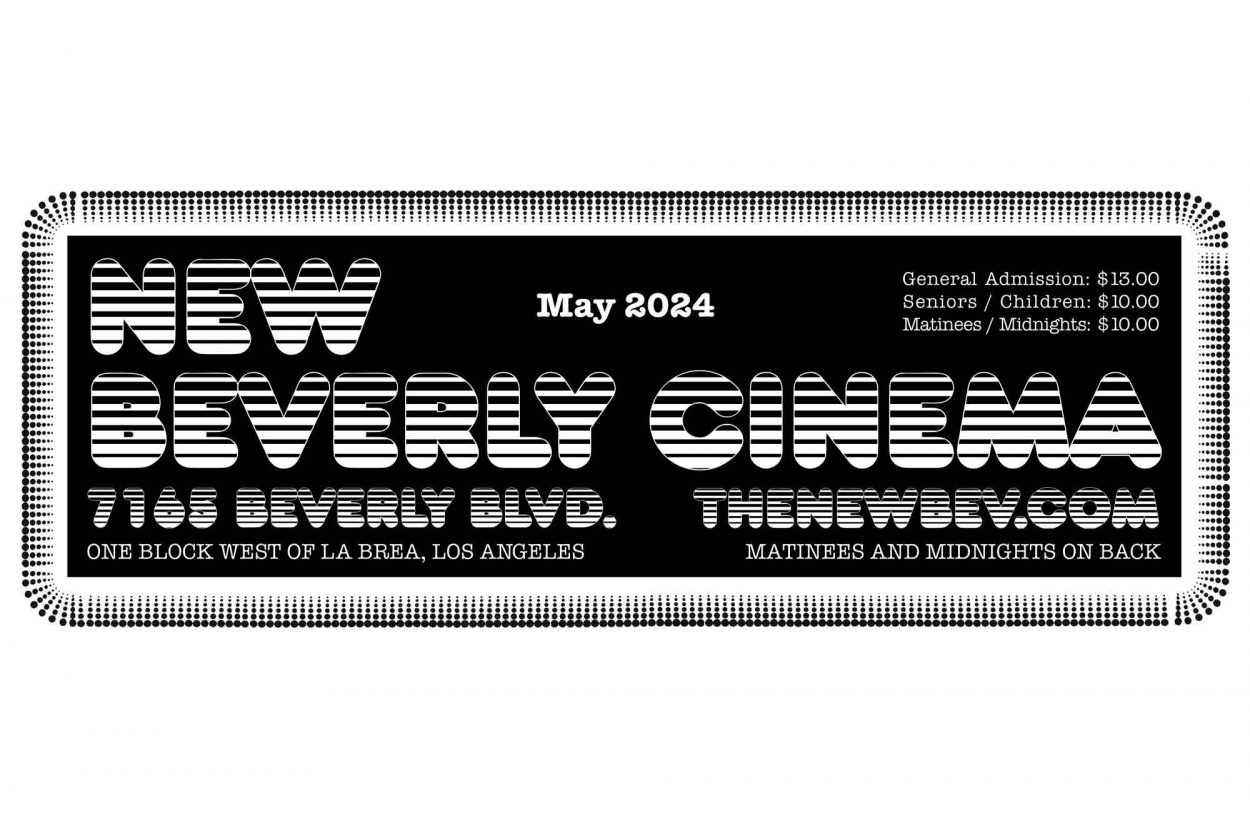In 1955, Raymond Borde and Etienne Chaumeton wrote one of the seminal texts on film noir, Panorama du Film Noir Américain. They expanded the idea of film noir from a simple term coined by colleague Nino Frank to a living, breathing section of filmmaking. This expansion, while strict in its visual schema, themes and philosophy was so flexible in its content and style that it refused and actively denied the kinds of hard labels that other genre films fit into so easily. No, film noir was (and is) something else.
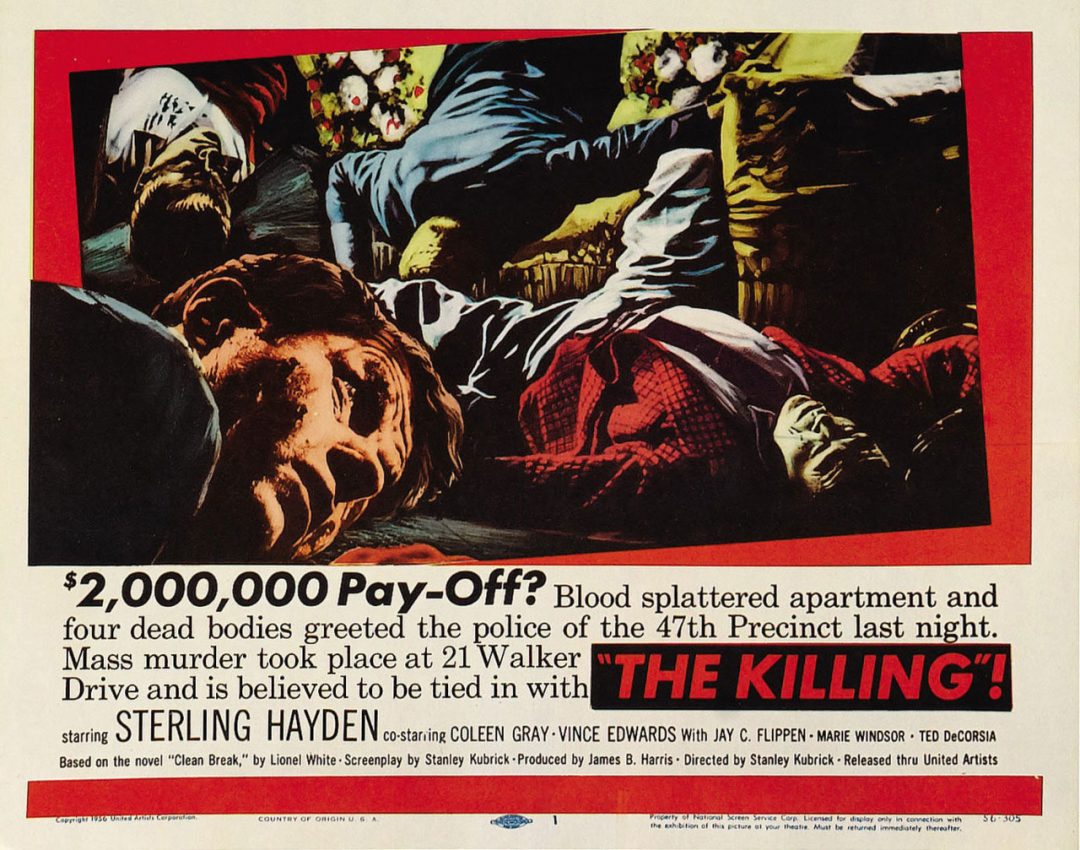
Screening at the New Beverly Cinema on December 11th and 12th, Stanley Kubrick’s The Killing (1956) is widely considered to be one of the best heist films ever made and a powerful example of film noir. The Killing broke all the rules just as they were being created. The vast quantity of films noir follow certain narrative conventions – detective stories, heist plots, “wrong man” scenarios, etc. The Killing, however, seamlessly combines documentary, existentialism and personal narrative into a focused study on human desperation.
Borde and Chaumeton wrote about film noir and the “crime documentary.” According to them, a “documentary-style picture examines [a crime] from without, from the point of view of the police official; the film noir is from within, from the point of view of the criminals.” Citing films like Naked City (Jules Dassin, 1948) and The Enforcer (Martin Rackin, 1951) as examples of crime documentaries (the protagonists are associated with lawful organizations), they had not yet encountered any films like what Kubrick had to offer.
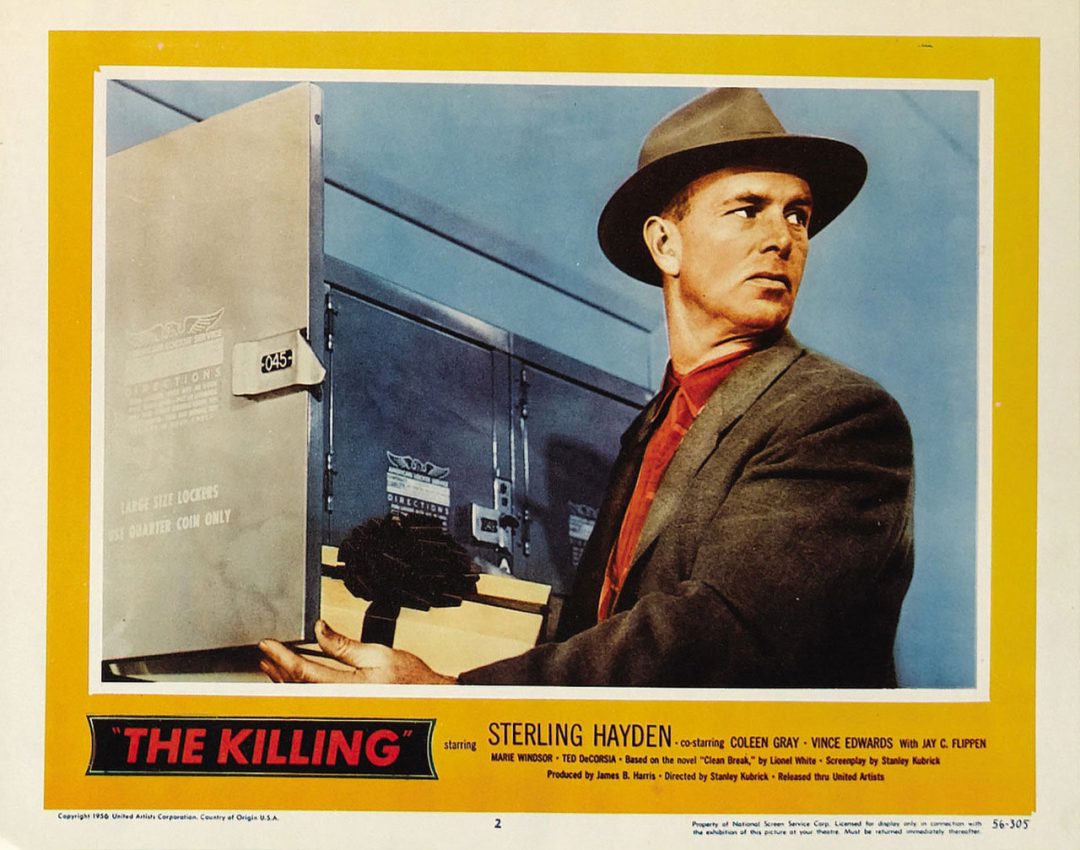
One short year after Panorama du Film Noir Américain was published, The Killing was released. The voice-over narration in this film shattered the noir/crime doc division. Not only did the audience align themselves with the criminal elements of the film but the criminals were portrayed in a sensitive manner. One couldn’t help but be on their side. While both voiceover styles (lawful and criminal) tend towards the testimonial or newsreel-like, the use of voiceover in Kubrick’s feature is light and pointed, important but not meant to be the film’s connective tissue as in films like Double Indemnity (Billy Wilder, 1944) or Dark Passage (Delmer Daves, 1947).
Stanley Kubrick’s intense and exciting work operates in a multi-tiered capacity, allowing the film to feel fresh and new upon each viewing. The Killing is like a rare wine or whiskey: a complexity of materials meticulously chosen or arranged in order to produce a highly intoxicating effect. How strong, deep, dark or light it is depends on the particular viewer’s experience. Some may simply smell it and be satisfied. Others? They may return for multiple glasses.
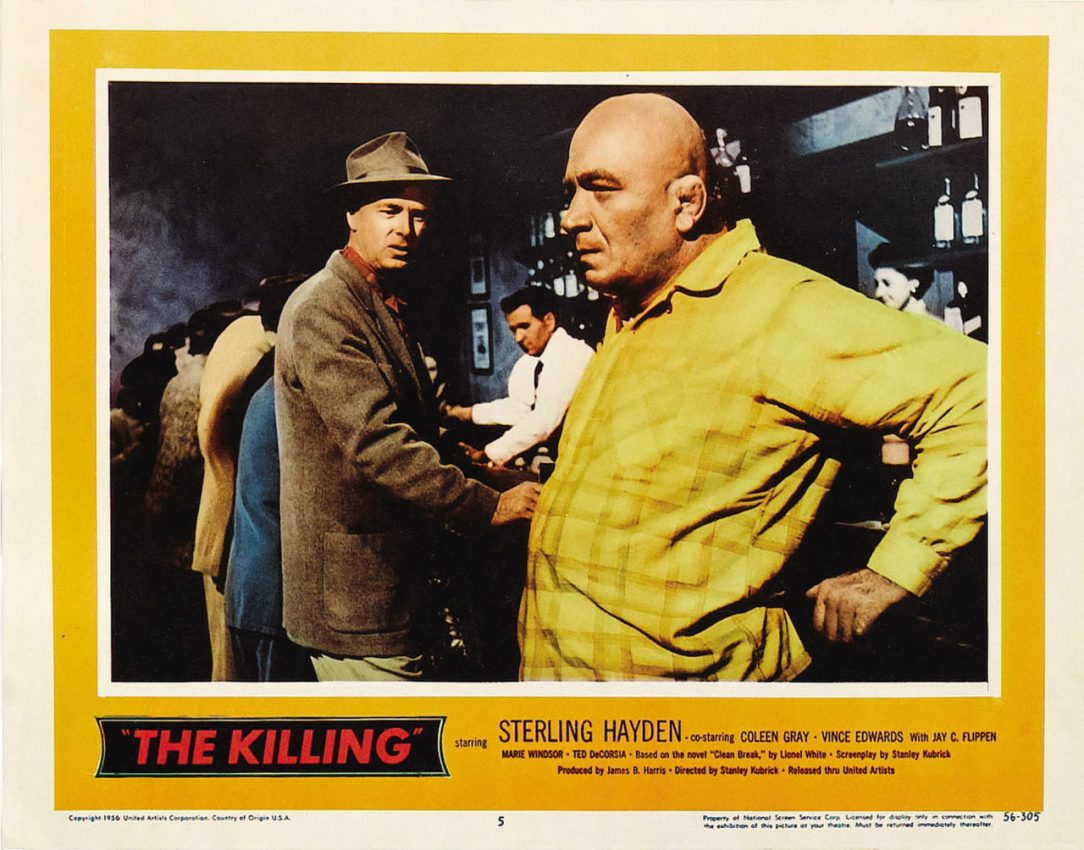
The Killing is certainly a heist film, but it’s not about the act as much as it is about the men who have come together to pull it off. Each one has a story that Kubrick carefully develops. This is the first “ingredient”: the personal narrative. The Killing examines the intricacies of the human condition as well as interpersonal connections. Each man involved needs the money but very few for avaricious reasons. These men have gotten to the point where violence, force and criminality seem the only options for success or happiness in their lives. Their desperation has forced them into a corner where they reject societally approved approaches to economic freedom because, quite simply, society has let them down.
In his essay, “No Way Out: Existential Motifs in the Film Noir” (Sight and Sound, Autumn, 1976, vol.45, no.4) Robert Porfirio states “look at the plot of almost any film noir and you become aware of the significant role played by blind chance… randomness is central to the noir world. The hero of Detour (Tom Neal) tells us: ‘Some day fate, or some mysterious force, can put the finger on you or me for no reason at all.’” This all-too-noir concept of the inevitability of fate is the second element of The Killing. It operates on a larger worldview expressed by the film’s final few scenes with Marie Windsor and Sterling Hayden respectively (no spoilers, you’ll have to come see the film).
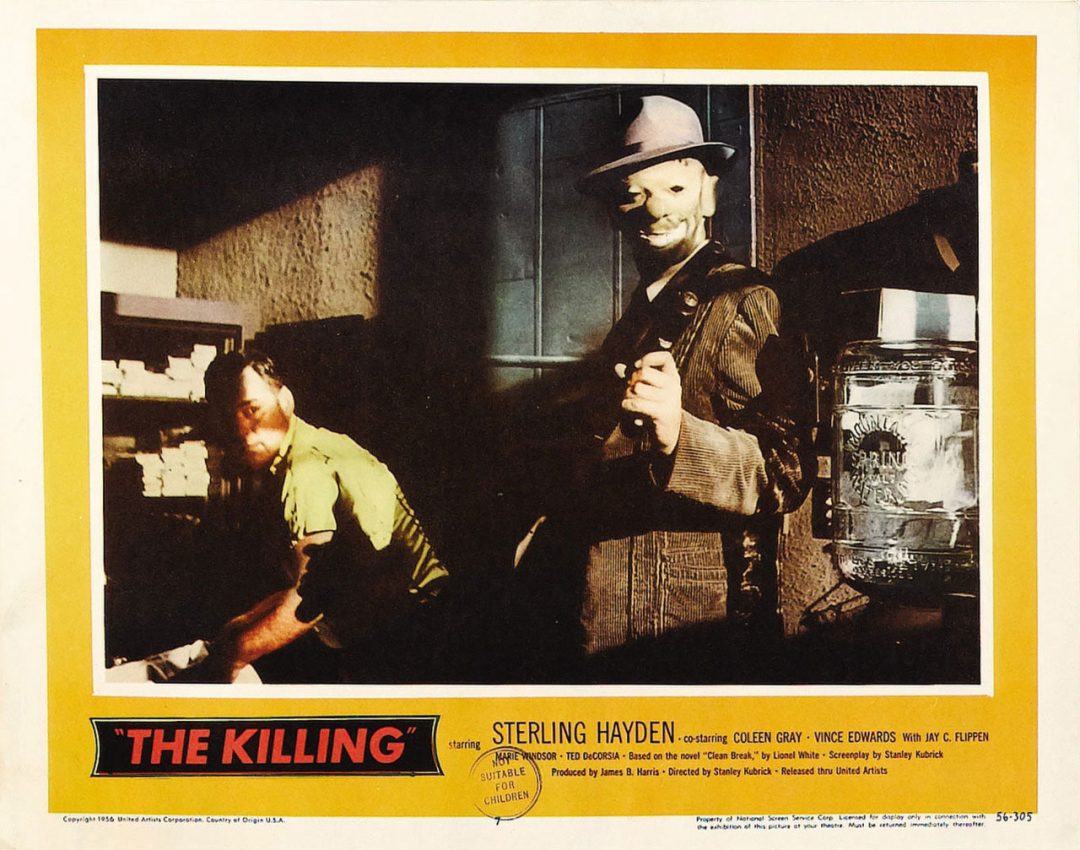
The final component of this film noir is the hybridization of fiction and non-fiction in the film text. Kubrick’s photojournalism background gave him the skillset to utilize real-life footage within a fictional narrative, thereby increasing the realistic feel of the plot. All the horse races and the footage of the crowds were direct outgrowths of his work as a young photographer and documentarian, shooting street scenes, public events, boxing and wrestling. The 27-year-old director knew how to match sports rhythm with a narrative, having done it via print and moving image media since he was a teenager.
Kubrick sought out personal contacts and real-life locations to give the film a stronger sense of authenticity. Kola Kwariani, who played Maurice Oboukhoff, was one of Stanley Kubrick’s chess companions at a place affectionately known as the Fleahouse (actually the Chess and Checker Club of New York). Kubrick shot scenes of Sterling Hayden and Kwariani playing chess together in The Fleahouse collapsing fiction/non-fiction, since Hayden is essentially the Kubrick stand-in. Hayden, as Johnny Clay, asks Kola/Maurice if he will assist in the bar fight that the men have planned, mirroring Kubrick’s own ask of Kola to participate as a character in The Killing. Kola, not just a chess expert, was a former wrestler having performed under the name “Nick the Wrestler.” Because of his experience in the squared circle, Kubrick had asked Kola to play this role. Kola had agreed to the film, just like Maurice eventually agrees to the bar fight.
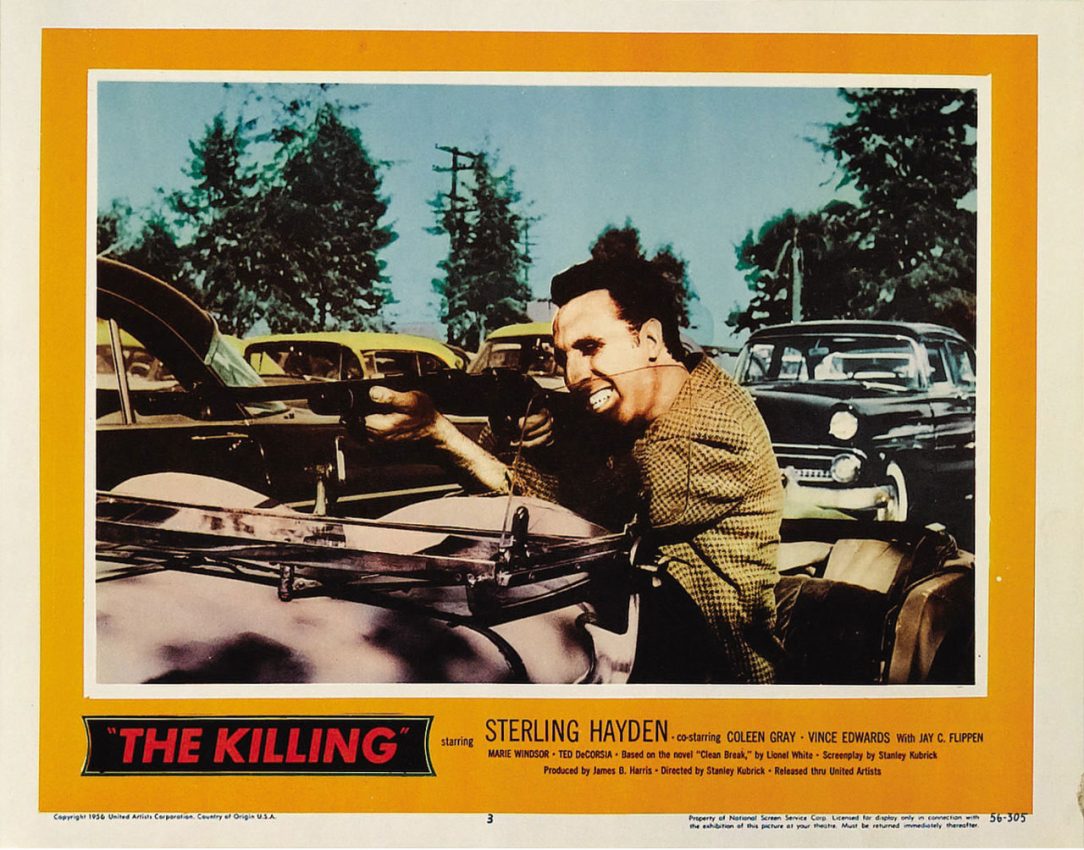
The Killing is an exquisite film stuffed with beautifully dark people that you love and feel for. The wonderful Timothy Carey cradles an adorable puppy while standing next to a line of shooting targets. The breathtakingly beautiful Marie Windsor spews nothing but bitterness from all-too-luscious lips. Surreal imagery and periodic clown references are secondary only to the striking cinematography by Lucien Ballard (and if you’ve never seen a Lucien Ballard movie, please see this one – the way he lights Elisha Cook, Jr.’s eyes will make you cry).
Finally, I would be remiss if I did not mention the brilliant dialogue by genius crime fiction author Jim Thompson. Kubrick may be responsible for the brutal elegance of this tragic work but it is bolstered, stabbed, tattooed and shot, point blank, by the words of Thompson.
Playing for two nights only, on a double bill with the incredible Lolita (1962), don’t miss The Killing. Additionally, Kim Morgan’s excellent piece on Lolita can be found here and is truly a great read. So get yourself to the New Beverly for Kubrickmas! You won’t be sorry!

